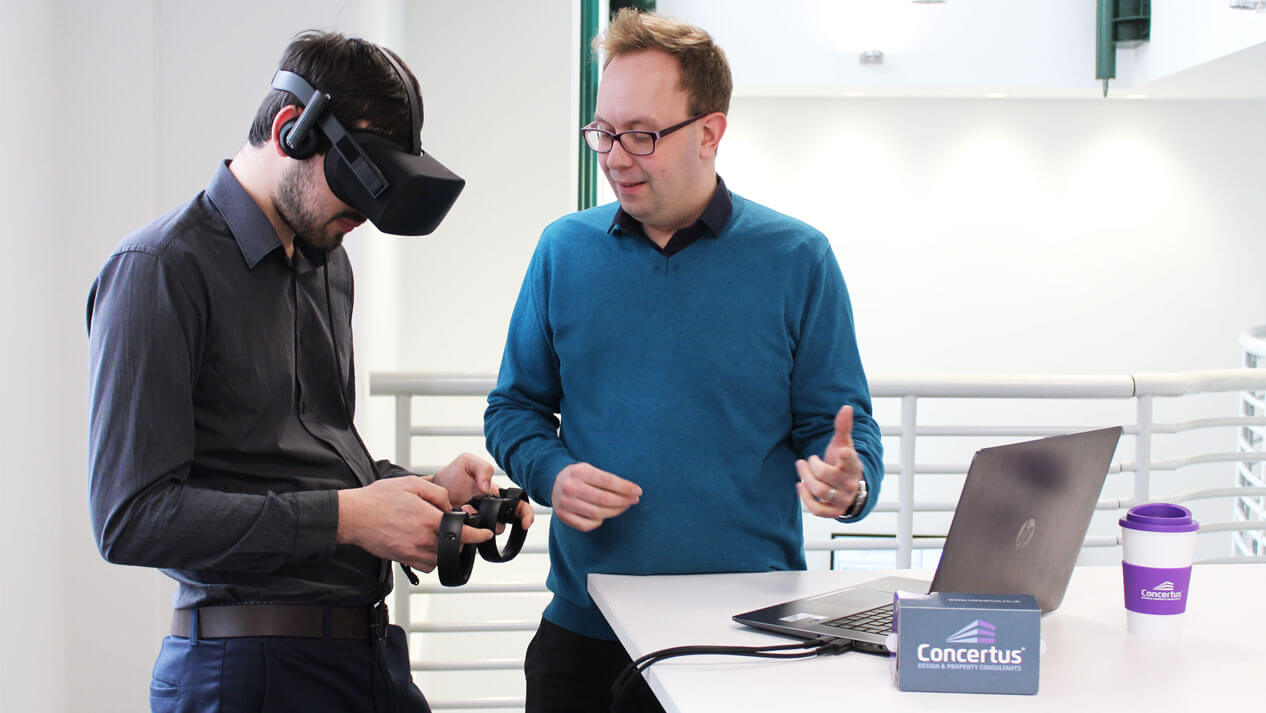August 19, 2022
Matthew Smith speaks with IET Magazine

Concertus is a passionate multi-disciplinary design and property consultancy that are experts in delivering quality, innovative and value-focused projects. Matthew Smith BSc (Hons) MCIAT is one of our Principal Building Surveyors, we recently sat down with him to discuss the industry and learn more about him.
When did your interest in surveying as a career first start?
I actually started as a CAD Technician after successfully gaining my degree in Architectural Technology. I’ve always preferred the science and maths side of construction, being able to solve problems with facts and figures. I like being able to offer working solutions, knowing I can back the solution up with facts. An opportunity came up after a few years of me being at Concertus to join the Building Surveying team and it was one I was keen to try as I knew the role would suit my way of working. I was excited to work on multiple projects covering different magnitudes of building. Since starting the role, I have never looked back.
Describe the most challenging design you have worked on
The swimming pool at Mildenhall Hub! Working on something like this is not something I had done before. Then add in the requirement to meet Sport England standards, in addition to the learner pool needing to have a moveable floor – I knew it would be extremely challenging. This space was difficult because of the multiple working levels, tiles needing to fall into drainage systems, and the pool and surrounding area having varying angles to consider. The client was also specific with their requirements. Although it had its challenges, it was incredibly rewarding because I learned so much. Mildenhall Hub is now an award-winning project too, so I couldn’t be prouder.
What is your most successful project to date – why was it successful?
It must be our current offices! Concertus has been at Friars Bridge Road since 2015. At the time, the project was the biggest one I had ever been asked to work on – it was a challenge I was more than willing to accept! I think it’s the most successful due to the response from colleagues when we moved in (this was the most nerve-wracking part!). We were on-site for six months, stripping the entire building back to a shell and then putting everything back together. It was a real team effort, with all our professional service teams involved. Seeing the faces of people when they walked in made all the challenges we faced worth it.
What do you think will be the key industry changes that will affect surveyors over the next few years?
I see a few things affecting us. The main thing will be the way we survey and assess existing building stock. Given the Government’s drive for Net Zero and desire to make all existing stock meet that target by 2050, currently the biggest thing we’re picking up on is being asked how building fabrics are formed – whether they have insulation in cavity walls, how the roof condition is etc. I think this is something that will become an everyday occurrence. Alongside Building Services Engineers, who provide instructions on how to improve the building, Building Surveyors now need to focus on being more well-rounded in their skill set. This will be one of the biggest scopes of work in the next few years. The current market conditions are also very unpredictable, with continuous price rises of materials and labour costs. Being able to give clients feedback as soon as possible is the biggest challenge we’re facing – we need to be providing early communication and keeping up to speed with the changes.
How much is technology now involved with your job and how do you see it progressing over the coming years?
Technology is always evolving. Just looking at my time with Concertus, we predominately used design software that generated designs as a BIM model. A lot of our teams used 2D drawings. Fast-forward a few years, we now have a dedicated BIM Manager and multi-discipline teams that can generate a model that is fully coordinated before even getting to site. The technology for surveying is changing thanks to the tools that are available. We now use drones for high-level works where it isn’t safe for people to climb. In the future, point cloud surveys are going to be used on a day-to-day basis, as opposed to being a luxury. There will be new technology created too I’m sure – it’s exciting to think where this may lead.
What do you think the most effective ways of measuring the job performance of a surveyor are?
For me, the results at the end of the project. If I can look back and say we have understood the client’s requirements, the client is happy, we’ve determined the cause of any issues, and we’ve resolved those issues, then I would class it as a successful piece of work. A good example would be if we’re approached about a school that doesn’t have enough space for pupils. It’s a case of exploring all potential options, providing all pros and cons and giving the school the information they need to make an informed decision on what is best for them. If we haven’t given them answers, we aren’t performing as we should.
For information on current Building Surveying roles at Concertus, please visit www.concertus.co.uk/culture-careers/.
This interview will also feature in the upcoming IET magazine.